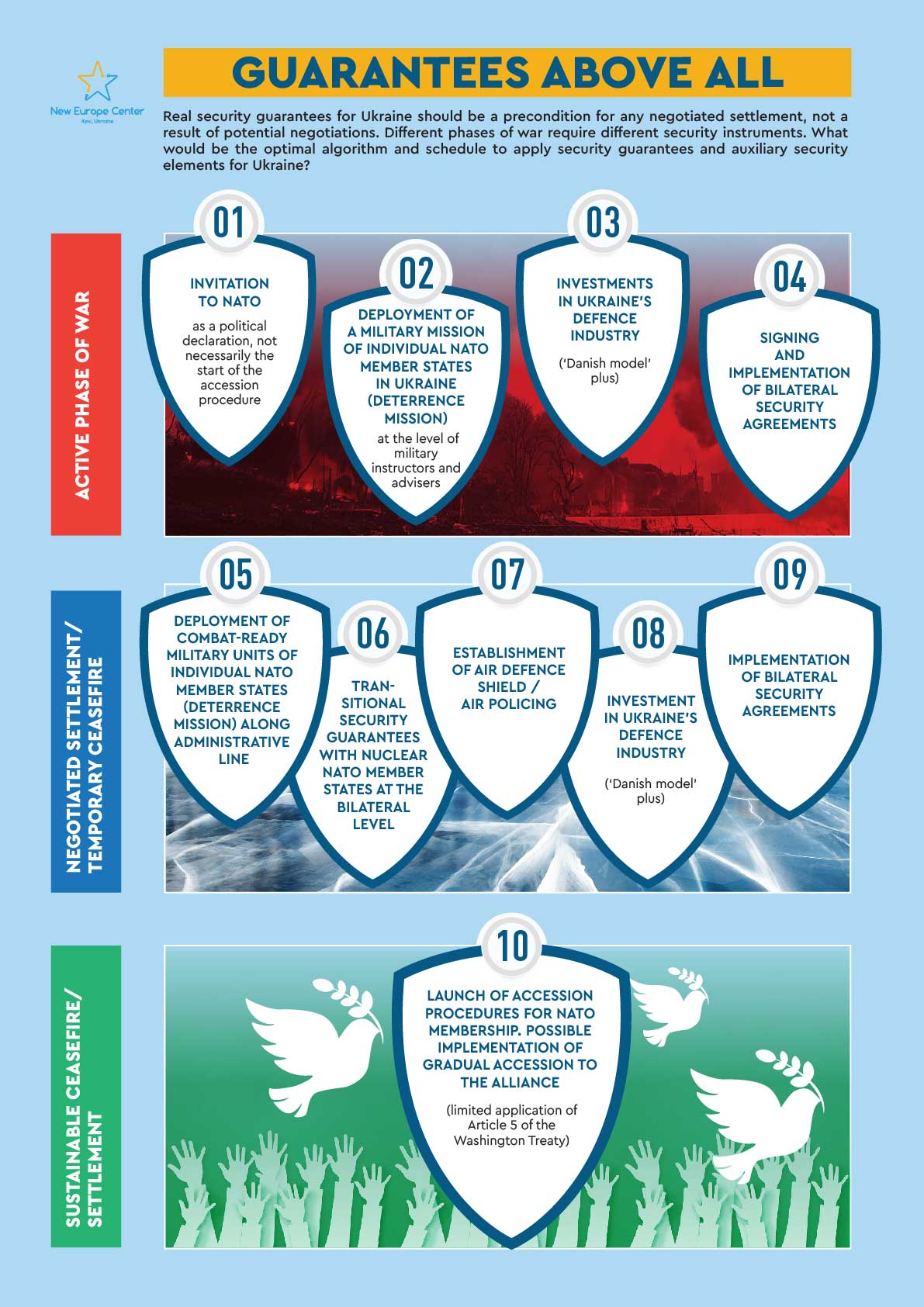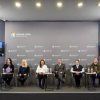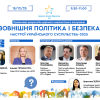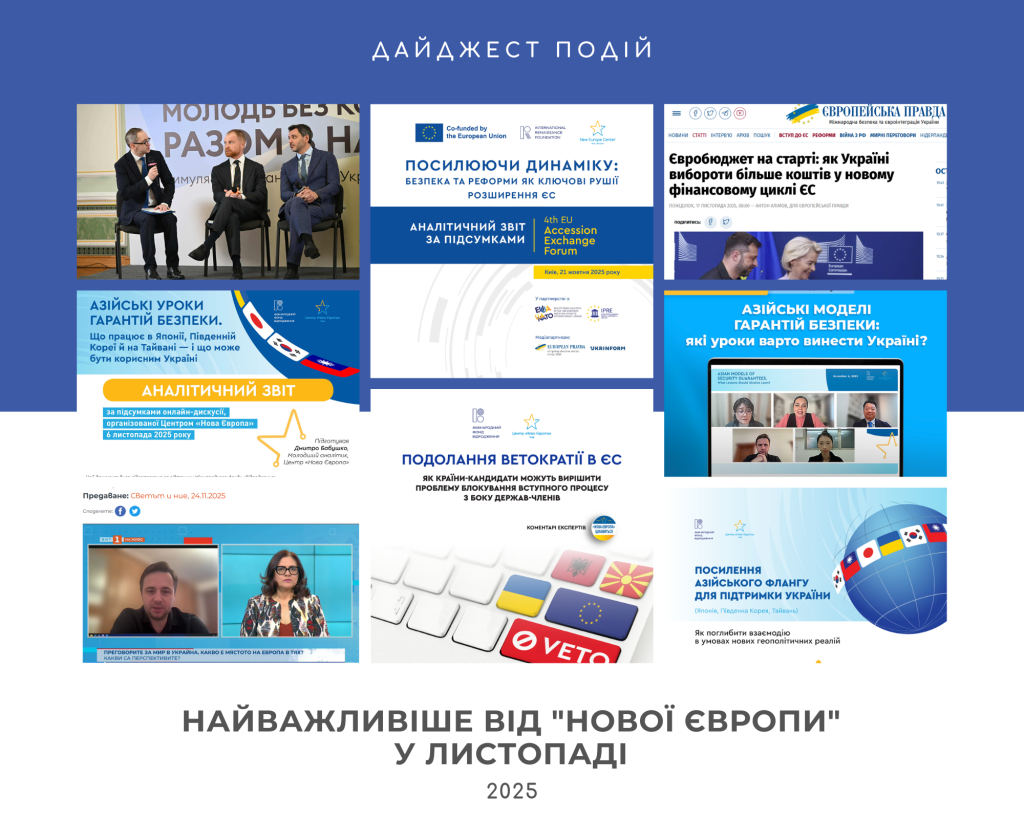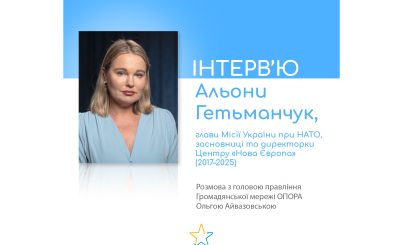Real security guarantees for Ukraine should be a precondition for any negotiated settlement, not a result of potential negotiations.
New Europe Center has prepared an analytical infographic with the recommended algorithm and schedule for the application of security guarantees and auxiliary security elements for Ukraine during different phases of the war.
This infographic continues a series of New Europe`s analytical materials on various security options – from weaker elements of an auxiliary nature (provision of weapons and equipment, military training, financial support, etc.) to decisions that involve elements of collective defense (such as sending troops). Recent of them: “Security matrix of Ukraine. From commitments to guarantees”, “Potential formats and requirements for inviting Ukraine to NATO”.
New Europe Center team has made and is making every effort to achieve the most effective security model for Ukraine – full accession to NATO: https://cutt.ly/Fe4MzcEZ
Security guarantees and complementary elements: algorithm of application
Real security guarantees for Ukraine are a mandatory PRECONDITION for any negotiated agreement, and not a PART of such settlement. 64 percent of Ukrainians believe that Ukraine should not accept any negotiations without real security guarantees, according to latest opinion poll, commissioned by New Europe Center. So, at least the first steps in this direction should be done BEFORE the start of settlement process.
In particular, BEFORE a ceasefire is reached, Ukraine should be invited to join NATO and the deployment of a military mission of European countries in Ukraine (the Deterrence Mission) should be conducted. It should have a transitional, interim function, not replacing the real security guarantees, and ideally, it should be followed by interim bilateral security guarantees from nuclear member states of NATO.
Ukraine is focused on NATO invitation, because it brings the world close to the end (the end, not just a pause) of the war in Ukraine, and not further away from it. Lack of invitation to join NATO is an invitation to Putin, Russian elites and the vast majority of Russian society to continue the war efforts. As long as there is strategic uncertainty in the Alliance about Ukraine’s membership in NATO, Russia will be tempted to make it part of the Russian Empire in any reincarnation.
Of course, the path to Ukraine’s full membership in NATO and, consequently, to the full application of Article 5 may be a long one. Therefore, interim security solutions will be needed. Not as an alternative to joining NATO, but as auxiliary and transit elements. That is why the most acceptable scenario and a timeline for Ukraine may look like this:
Current active phase of the war:
- Invitation to NATO. more as a political declaration, not a practical start to the accession procedure. At the same time, it is important for several reasons. From a political point of view, it is a signal that as the war continues, Putin is actually moving away from the stated goals of the war (Ukraine’s neutrality), not closer to them. From a psychological perspective, it will have a significant effect on the morale of the Ukrainian military and society as a whole. From the point of view of starting the negotiation process, it will significantly strengthen Ukraine’s position, which is currently weakened due to the forced loss of military initiative.
- Launch of deterrence mission in Ukraine. Already at this stage – in the form of military instructors and advisers at a safe distance positioned from the front line (Western, Southwestern, Central Ukraine). This should be done before the start of negotiations in order to make this issue ‘non-negotiable’, to avoid ‘dilution’ of the mandate and adjustment of the composition of this mission per Russia’s or its partners’ request.
- Signing and the start of implementation of bilateral security agreements. Right now, 28 of such agreements were signed.
- Investments in Ukraine’s defence industry, following and multiplying so called ‘Danish model’. Focus here should be on the investments from the EU, NATO and G7 member states.
Negotiated settlement/ceasefire
- Deployment of combat-ready military units of individual NATO member states (deterrence mission) along administrative line. KFOR mission in Kosovo can serve as a starting model. Some useful elements of NATO’s Forward Enhanced Presence (EFP) in Central Europe — especially the Baltic States — could also be analyzed and applied as a model of Russia’s deterrence. The composition of such mission would be European countries, but with appropriate guarantees and practical support from the United States (air defence, intelligence, etc.).
- Development of interim bilateral security assurances with NATO nuclear member states: the UK, France, and the United States. The documents signed between the invitation and Finnish and Swedish membership in NATO, but with legal obligations (in the case of Finland and Sweden, these were political declarations), can be used as a model. Ideally — in the form of the treaty.
- ‘Safe sky’ – establishment of an air defense shield/ launch of an Air Policing. In the context of creating an air defence shield, it is possible to involve the air defence capabilities of individual NATO member states (in particular Poland and Romania) to protect the skies over parts of western and southwestern Ukraine. NATO regional Air Policing missions could be used as the basis for air patrols.
- Investments in Ukraine’s defence industry, by following and multiplying a ‘Danish model’ primarily by the EU, NATO and G7 states.
- Implementation of bilateral security agreements.
Sustainable ceasefire/settlement
- If the appropriate security and political conditions are in place, launch accession procedures for NATO membership. If at this point some territories of Ukraine remain temporarily occupied, the implementation of gradual accession with the application of Article 5 to exclusively non-occupied territories (support for gradual accession in Ukrainian society is currently at 70%). The parameters for the application of Article 5 can be determined through the relevant annexes to Article 6 of the Washington Treaty, which defines the geographical coordinates of the application of Article 5. (In NATO’s history, such amendments have already been made twice — with Turkey’s membership in 1951 and the loss of status of Algeria as a French colony in 1962).
In case it is difficult to reach a consensus at the NATO level in the context of the launch of military deterrence mission, the creation of an air defence shield and launching the Air Policing initiative, it can be done at the level of a coalition of the willing, or more precisely, a Coalition of Resolute. Individual member states that are able to demonstrate political resolve at a critical time for Euroatlantic security.
The material prepared with the support of the International Renaissance Foundation. The material reflects the position of the authors and does not necessarily coincide with the position of the International Renaissance Foundation.



